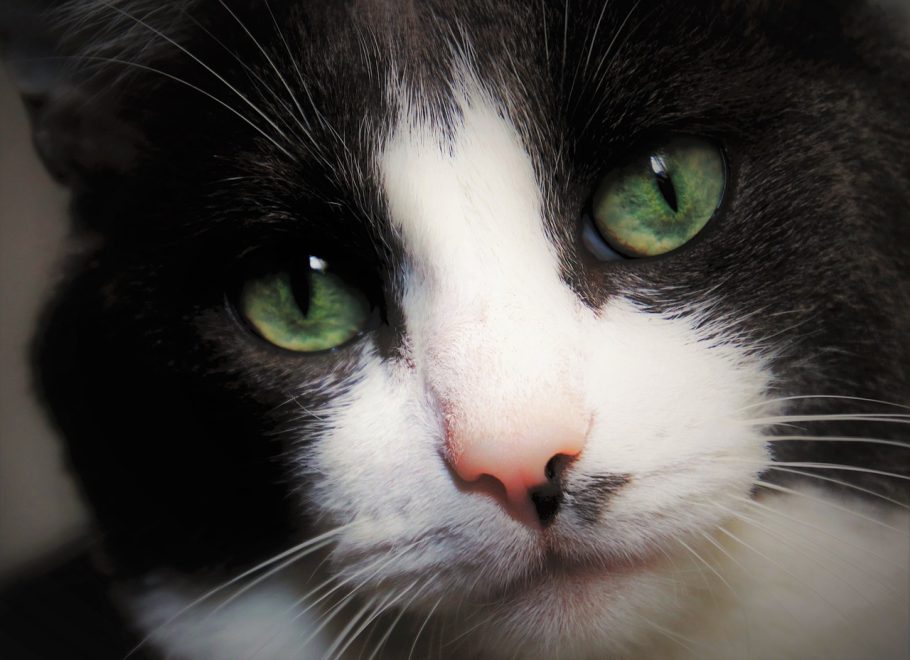Cats are well known for their meowing, which is often seen as a way to get their human’s attention. However, the truth is that cats use a variety of sounds to communicate with humans and other cats. In order to understand what these sounds mean, we must first understand the different types of sounds cats make and their corresponding meanings.
Cats make a range of sounds, including meows, purrs, growls, hisses, and chirps. Each sound has a different purpose and can convey various emotions and intentions. While meowing is often associated with attention-seeking behavior, it can actually have different meanings depending on the tone, pitch, and frequency of the meow. By better understanding the different sounds cats make, we can decipher their messages and strengthen our bond with our feline friends.
The Various Sounds Cats Make
Cats use a variety of sounds to communicate, and each sound has a different meaning. Meowing is just one of the many sounds they make, and it can be used for different reasons. In addition to meows, cats also make purrs, growls, hisses, and chirps.
Purring is often associated with happiness and contentment, while growling and hissing are warning signs that cats use when they feel threatened or defensive. Chirping is a friendly sound that cats make when they’re feeling playful or curious.
Understanding the different sounds cats make can help us better understand their emotional state and intentions. It can also help us communicate more effectively with our feline friends and respond appropriately to their needs.
The Purpose of Meowing
Meowing is often considered to be a way for cats to get attention from their humans, but it can also have deeper meanings. The pitch, tone, and frequency of a meow can convey different emotions and intentions. For example, a short and soft meow can be a greeting, while a loud and persistent meow can indicate that the cat wants something, such as food or attention.
Other factors such as body language and facial expressions can also give context to a cat’s meow. Understanding the different types of meows and their meanings can help cat owners better communicate with their feline companions. It’s important to pay attention to the specific sounds that each cat makes, as they can vary from cat to cat and situation to situation.
- The greeting meow: a soft and short meow that cats use to say hello or express excitement.
- The demanding meow: a loud and persistent meow that cats use to indicate that they want something, like food or attention.
- The distress meow: a loud and high-pitched meow that cats use when they’re in pain, scared, or uncomfortable.
By paying attention to their cat’s meows and body language, owners can better understand their cat’s needs and emotions. This can help strengthen the bond between cats and their humans and lead to happier and healthier relationships.
The Greeting Meow
hello to humans or other cats. It’s a friendly and welcoming sound that shows that the cat is happy to see you. When a cat greets you with a meow, it can also be a sign of affection and trust. Some cats may even have a specific meow reserved just for their favorite human. It’s important to respond to your cat’s meows and greet them back, as it can strengthen the bond between you and your furry friend. Just remember to pay attention to the tone and pitch of the meow, as it can indicate the cat’s emotional state and intention. In summary, the greeting meow is a warm welcome from your cat that shows their love and excitement to see you.
hello
The greeting meow is a soft and short meow that cats use to say hello to humans or other cats. It’s a friendly and welcoming sound that shows that the cat is happy to see you. Cats may also greet you with a head bump, rubbing their scent on you as a sign of affection. This type of meow can also be used after periods of separation to reaffirm the bond between the cat and its human friend. Overall, the greeting meow is a positive and friendly sound that shows your cat is happy to see you and values your presence.
The greeting meow is a soft and short meow that cats use to say hello to humans or other cats. It’s a friendly and welcoming sound that shows that the cat is happy to see you. This type of meow is usually accompanied by a head bump or a tail up in the air as a sign of affection. It’s important to respond to your cat’s greeting meow with a friendly tone and by spending some time with them. This will help build a strong bond between you and your feline friend. Additionally, if your cat is greeting you with a meow, it’s a sign that they trust and feel comfortable around you. So, make sure to return the favor and show your love and affection to your furry companion.
The Demanding Meow
The demanding meow is a cat’s way of communicating its desire for something. This meow is usually loud and persistent, and it can be associated with feeding time, as the cat may be hungry and asking for food. However, cats can also use this meow to indicate that they want attention or to go outside. If you have a cat that meows constantly, it’s important to pay attention to their body language and other cues to understand what they’re trying to communicate. By understanding their meows and other sounds, we can better communicate and bond with our feline friends.
The Distress Meow
The distress meow is a sound that indicates that something is wrong with the cat. This meow is louder and higher in pitch than the other meows, and it shows that the cat is in pain, discomfort, or distress. Cats may also use this meow when they feel scared or threatened. It’s important for cat owners to pay attention to this sound and try to identify the cause of the distress. Factors, such as illness, injury, or changes in the environment, can cause distress meows. If the distress meow is persistent and doesn’t go away, it’s important to take the cat to the vet for a check-up. By understanding the distress meow, cat owners can help their feline friends feel better and more comfortable.
The Purr
The purr is a unique sound that cats make when they’re happy and content. It’s a soft and rhythmic sound that’s often associated with petting and cuddling. While many people assume that cats only purr when they’re happy, it can also be a sign of relaxation and contentment. Some cats even purr when they’re in pain or sick, which can be a way for them to self-soothe and comfort themselves. Understanding the different sounds that cats make, including purring, can help us better communicate and bond with our feline friends.
Other Sounds Cats Make
Aside from meows and purrs, cats also use other sounds to communicate. Growling is a low and deep sound that cats use when they’re threatened or defensive. It’s a warning sign that shows that the cat is ready to defend itself if necessary. Hissing, on the other hand, is a sharp and spitting sound that cats use when they feel scared or angry. It’s also a warning sign that shows that the cat is feeling threatened and could attack if necessary.
Chirping is another sound that cats use, which is soft and short. They use it when they’re feeling playful or curious. It’s a friendly sound that shows that the cat is interested in what’s going on around it. By understanding these different sounds, we can better communicate with our feline friends and ensure they are happy and comfortable.
The Growl
When a cat feels threatened or defensive, it may emit a low and deep growl. This sound serves as a warning sign for potential attackers, letting them know that the cat is ready to defend itself if necessary. The intensity and duration of the growl can vary depending on the situation and the cat’s level of aggression. A cat may growl when it feels cornered, when it feels that its territory is being threatened, or when it is in pain. If a cat is growling, it is important to give it space and avoid provoking it further.
The Hiss
The hiss is a sound that many cat owners dread hearing because it usually indicates that their cat is feeling scared or angry. When a cat feels threatened, it will often flatten its ears, arch its back, and puff up its fur to make itself look bigger. At the same time, it may begin to make a hissing sound by letting out quick bursts of air through its mouth while keeping its teeth clenched. This sound is meant to be intimidating and serve as a warning to the perceived threat that the cat is ready to attack if necessary.
The hiss is an instinctual behavior that all cats possess, and it’s one of the ways that cats are able to defend themselves in the wild. However, in our homes, we can help our cats feel safe and secure by creating a calm and peaceful environment for them. This means providing a comfortable place for them to sleep, regular playtime, and ensuring that they have access to food, water, and a clean litter box.
The Chirp
Chirping is a unique sound that cats make, and it’s often associated with their playful and curious nature. Cats typically chirp when they see birds or other animals that catch their attention, or when they’re exploring their environment and discovering new things. The sound itself is a high-pitched and short trill, which is quite different from the longer meows or purrs that cats make.
Chirping can also indicate that a cat is feeling relaxed and happy, and it’s not uncommon for cats to chirp when they’re being petted or cuddled. Some cats even chirp when they’re sleeping, which is an adorable sound to hear!
Overall, chirping is a delightful sound that cats make, and it’s a great way for them to communicate their feelings of playfulness or curiosity. If your cat chirps at you, it’s a good sign that they’re feeling happy and content, and it’s a great opportunity for you to bond with your feline friend.
Conclusion
As we’ve explored in this article, cats use a variety of sounds to communicate and meowing is just one of them. While meowing can be a way for cats to get attention, it can also have different meanings depending on the situation. By understanding cat communication and the different sounds they make, we can better understand their emotions and intentions. This can help us bond with our feline friends and improve our relationship with them. So, the next time your cat meows, take a moment to observe their body language and other vocalizations to understand what they’re really trying to tell you.




